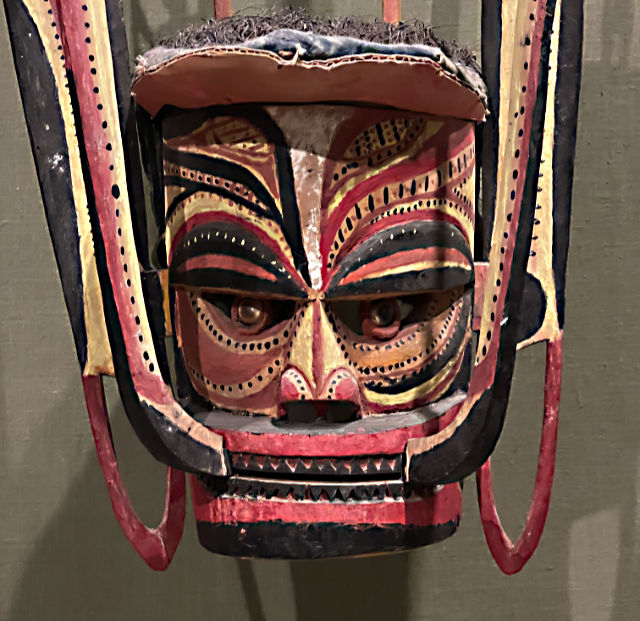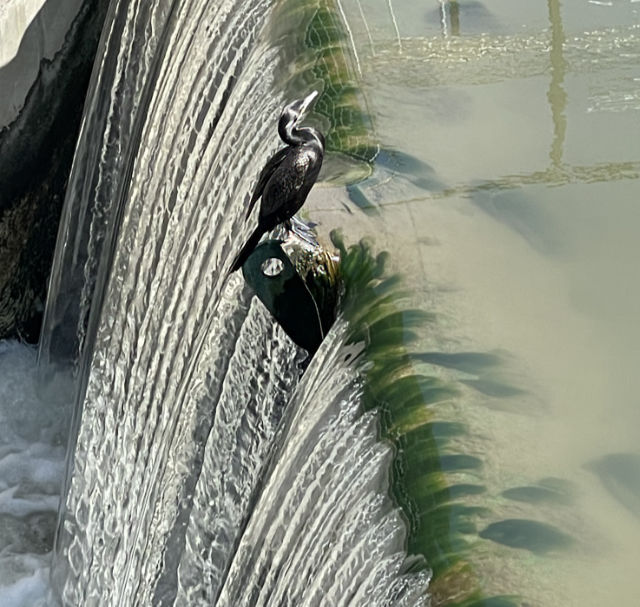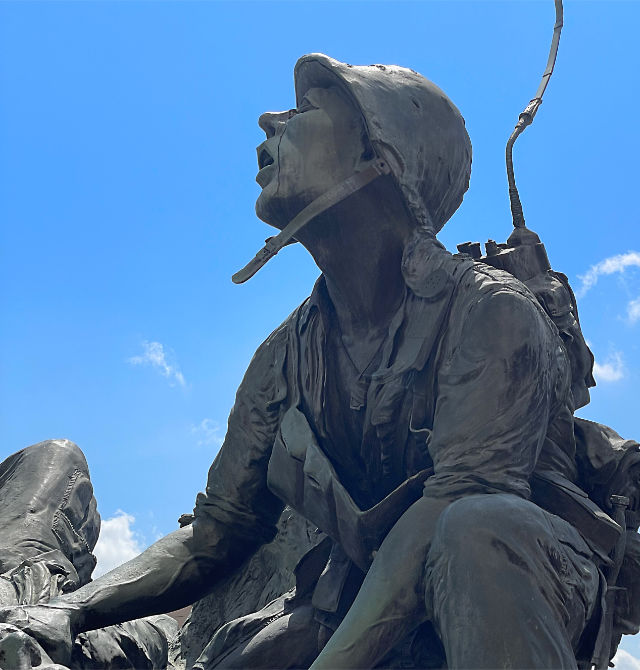Howdy, y’all! I hope you’re staying cooler than we are, here in the Texas Hill Country.
Debbie and I returned last Sunday from an extended weekend spent in San Antonio. We were there for no particular reason other than a change of scenery.
I thought about making this post a detailed report of our trip, but decided against boring you with the equivalent of a vacation slide show. [Don’t get me wrong; I find your vacation photos to be extremely interesting and enjoyable…you are special to me in every regard!] But I’m not abandoning the slide show theme completely; the photo at the top of the page is an example.
Say w_at?
The Wall Street Journal recently published an article about the ThinkPad (possibly behind a paywall), the laptop introduced by IBM in 1992 and still in production by Lenovo since it acquired IBM’s laptop business in 2005. It is, according to the article, still the most widely-used business laptop in the world, and is little changed from the original model. As proof, the WSJ provides the following:
The logo is the same, although in 2005 Lenovo did add the red dot over the “i” in “Think” that remains today. That logo has remained angled at 37 degrees on the device. And on the keyboard the small, red, old-timey trackpoint remains nestled between the “B,” “G” and “H” keys (which Lenovo says some users swear by and some CIOs say they never use). Ports and camera placement have also been relatively consistent. And despite some experimentation with colors, the laptop itself primarily remains its original black.
— Wall Street Journal, August 7, 2024
Even though our first personal laptop was a ThinkPad, the computer itself is not the item of interest here. Instead, re-read the preceding paragraph and see if anything looks a bit…off…to you.
You caught it, the grammatically-observant savant that you are. The parenthetical phrase in the third sentence implies that the letters “B,” “G,” and “H” are verboten to certain people, including Chief Information Officers.
The WSJ has a semi-regular column called Style & Substance, written by William Powell, the stylebook editor at the Journal, whose job it is to educate and police the writers (and, sometimes, the readers) about appropriate grammar and stylistic rules and usage. It’s a fascinating, introspective look at what the Journal writers do well (Heads Above The Rest focuses on headlines that stand out) and not-so-well (Quiz: Find the Flubs highlights things that could/should have been caught before going to press). I can’t help wondering if he’ll call out the preceding referential shortcoming in a future column.

Remembered for being forgotten…

I don’t recall where I grabbed that screen capture…possibly from The Athletic‘s daily coverage of the recently completed Olympics. The source is not important, because the quote appears in multiple outlets across the web.
For some reason, the first thing that came to my mind when I read it (which, by the way, should make a “Best of…” somewhere, because it’s awesome) was the old Irish blessing “may you be in heaven a full half-hour before the devil knows you’re dead.”
My wish for you today is that you’re so far ahead of your “competition” (however you want to define that) that it forgets all about you until the medals are handed out.

Yes music, please…
It’s been almost a decade-and-a-half since I graced you with a performance by The Cleverlys, a band specializing in bluegrass arrangements of non-bluegrass songs, and that’s too long.
These guys look like a parody act (and they are), but musically, they’re the real deal, refusing to be shoehorned into any genre. Check out this live recording — it’s long-ish, but at least give the first five minutes a listen.
So, what would Blackstreet and Dr. Dre think about this arrangement? Who cares? They rollin’ with the phatness.

Bonus points if you understand the reference in the heading above.
Dammit, Jim…I’m a blogger, not an orni…orthin…bird identifier guy!
Did I mention we recently spent some time in San Antonio? One of our Friday activities was a stroll for a mile or so down the River Walk from the Pearl District to the Tobin Center to purchase tickets for an upcoming concert by Francesco Stephen Castelluccio, aka Frankie Valli, of The Four Seasons fame. He’s still performing at age 90. His current tour is called The Last Encores, and I’ll let you read into that what you will.
But that’s neither here nor there. What I really want to talk about is the birds we saw on our walk. They were diving into the San Antonio River, presumably in search of a tasty fish, and reappearing yards away from where they entered. I was able to get a photo of one of them perched on the edge of the lock where the river taxis ascended and descended on the trek to and from downtown.

They’re hard to make out from this picture, but the bird has webbed feet like a duck and hooked bill. And armed with absolutely no knowledge, I had always identified it as a type of grebe. But in an uncharacteristic quest for accuracy, when I googled “grebe,” none of the photos resembled this bird. So I posted the photo to a bird identification group on Facebook and received an almost immediate answer: it’s a Neotropic Comorant.
I’m unsure as to why I think it’s important that you know this, other than possibly saving you from the embarrassment of fowl misidentification. Also, saying “neotropic comorant” automatically imbues one with a certain air of sophistication, or so the voices in my head have told me.

Research News: Universal antivenom for snakebites?
I may not be a ornth…ornothi…bird guy, but I am a snake guy, albeit an amateur one, and I’m pretty excited by this news [Warning: the linked website contains photos of snakes] from the Scripps Research team. They have isolated an antibody that blocks the effects of the venom of a number of deadly snakes, including cobras, mambas, and kraits.
These species are members of the Elapid family and they are found primarily in Asia, Africa, and Australia. (It’s worth noting that the only member of the Elapid family found in the US is the coral snake.) Bites from those species account for more than 100,000 human deaths each year and the availability of a relatively inexpensive and easily obtained antivenom that would treat all such bites — instead of needing a separate antivenom for each species — would be of huge significance.
While the new antivenom is not effective against viper bites* — vipers in the US include rattlesnakes, copperheads, and cottonmouths (aka water moccasins) — the research suggests that the same approach that identified the elapid-related antibody could also yield antibodies that counteract viper venom. If the various antibodies can be combined into a sort of cocktail, the result would be a true universal antivenom. And the additional exciting aspect of this research is that these antibodies can be synthesized in a lab, as opposed to today’s use of animals such as horses and sheep — and snakes — to produce the various antivenoms.
As I said, this research is exciting, and while the chances of anyone in the US getting bitten by a venomous snake are quite remote, many more pets are envenomated, and a universal antivenom such as this should also be effective for treating them.
*Viper venom is primarily hemotoxic, meaning that it attacks blood cells and disrupts the clotting process. Elapid venom is primarily neurotoxic, causing paralysis which can result in death due to the inability to breathe.

Discover more from The Fire Ant Gazette
Subscribe to get the latest posts sent to your email.

